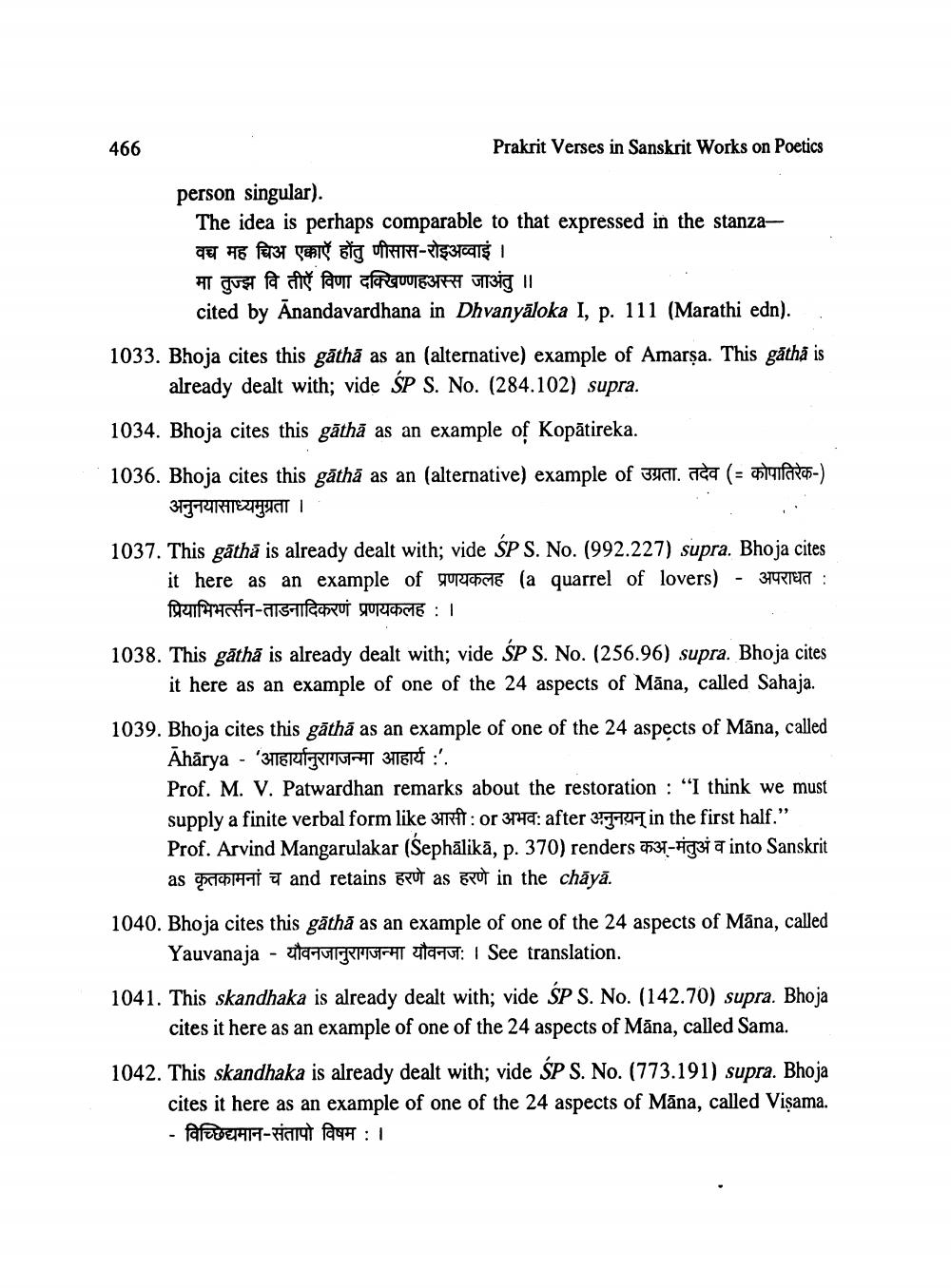________________
466
Prakrit Verses in Sanskrit Works on Poetics
person singular).
The idea is perhaps comparable to that expressed in the stanzaवच मह चिअ एकाएँ होंतु णीसास-रोइअव्वाइं। मा तज्झ वि तीऍ विणा दक्खिण्णहअस्स जाअंत ।।
cited by Anandavardhana in Dhvanyāloka I, p. 111 (Marathi edn). 1033. Bhoja cites this gāthā as an (alternative) example of Amarsa. This gātha is
already dealt with; vide SP S. No. (284.102) supra. 1034. Bhoja cites this gāthā as an example of Kopātireka. 1036. Bhoja cites this gāthā as an (alternative) example of Jud. Iga (= astuifd9c6-)
अनुनयासाध्यमुग्रता । 1037. This gātha is already dealt with; vide ŚP S. No. (992.227) supra. Bhoja cites
it here as an example of प्रणयकलह (a quarrel of lovers) - अपराधत : प्रियाभिभर्त्सन-ताडनादिकरणं प्रणयकलह : ।
1038. This gāthā is already dealt with; vide ŚP S. No. (256.96) supra. Bhoja cites
it here as an example of one of the 24 aspects of Māna, called Sahaja.
1039. Bhoja cites this gāthā as an example of one of the 24 aspects of Māna, called
Ahārya - 'ZERÍTMIGHT 3ER :'. Prof. M. V. Patwardhan remarks about the restoration : "I think we must supply afinite verbal form like आसी : or अभव: after अनुनयन् in the first half." Prof. Arvind Mangarulakar (Sephālikā, p. 370) renders 5634-rigzi a into Sanskrit as कुतकामनां च and retains हरणे as हरणे in the chaya.
1040. Bhoja cites this gāthā as an example of one of the 24 aspects of Māna, called
Yauvanaja - 01-11RIGHT U UT: 1 See translation.
1041. This skandhaka is already dealt with; vide ŚP S. No. (142.70) supra. Bhoja
cites it here as an example of one of the 24 aspects of Māna, called Sama. 1042. This skandhaka is already dealt with; vide ŚP S. No. (773.191) supra. Bhoja
cites it here as an example of one of the 24 aspects of Māna, called Visama. - PREHF-a fach: 1




